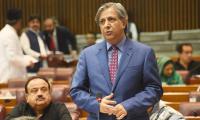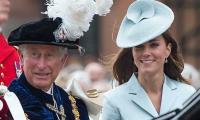LAHORE
As the year 2015 ends, Pakistan misses some very important internationally committed goals vis-à-vis education which is certainly not a good news at all keeping in view growing social inequality and intolerance in the society.
These include Education for All (EFA) goals and education related Millennium Development Goals (MDGs).
Above all, there are also constitutional provisions for the promotion of education which one finds not being implemented in the true spirit over the years. The year 2015 proved no exception too as evident from little efforts made by the government to further the education reform agenda, especially at a time when it is needed the most. The ‘progress’ by federal and provincial governments vis-à-vis free and compulsory education under the 18th constitutional amendment is enough to understand the level of commitment and seriousness by those at the helm. Most of the provincial governments have introduced the Right to Education (RTE) laws, the rules for implementation of the same are yet awaited.
The EFA goals included expanding early childhood care and education; providing free and compulsory primary education for all; promoting learning and life skills for young people and adults; increasing adult literacy by 50 percent from the level in 1990; achieving gender parity by 2005 and gender equality by 2015 and improving the quality of education for all.
The MDG No. 2 pertains to achieve universal primary education and the relevant target reads “ensure that all boys and girls complete a full course of primary schooling by 2015” while MDG No. 3 encourages the international community to promote gender equality and empower women; it reads “eliminate gender disparity in primary and secondary education preferably by 2005 and at all levels by 2015”.
Former Dean of Education at Punjab University Prof Dr Hafiz Muhammad Iqbal says according to MDGs, Pakistan was expected to achieve 100 percent Net Primary Enrollment rate by 2015 and 100 percent completion/survival rate to Grade-V by the same year. In terms of literacy, Pakistan was expected to achieve overall 88 percent literacy rate for 10+ years aged population, he added.
According to Dr Hafiz Muhammad Iqbal, who is now serving University of Dammam, Saudi Arabia, in order to achieve steady progress in this regard, Pakistan announced three education policies in 1992, 1998 and 2009 and a number of development plans including National Plan of Action 2001-2015 and Education Sector Reforms (ESR).
It is pertinent to mention here that as per Pakistan Social and Living Standards, Measurement (PSLM) 2013-14 Survey literacy target set for 2015 was 88 percent while actual achievement was 58 percent. Similarly, the Net Primary Enrollment (NPE) target was 100 percent while actual achievement was 57% (for 5-9 years old) and 65% (for 5-10 years).
Pakistan is confronted with a multitude of problems including poverty, social inequalities, unemployment and extremism. Professor Iqbal argues that although reason for low quality of life of all the individuals, societies may not be attributed to illiteracy yet still the basic literacy and numeracy are considered crucial part of individual development and their participation in the social and economic life. “Without an optimum rate of education and literacy, the real potential of individuals and the societies cannot be realised and put on the path of sustainable economic development”, he explains. Similarly, experts believe that countries are under developed because most of their people are under developed having had no opportunity of expanding their potential and capacities in the service of society.
Undoubtedly high literacy rate ensures economic and social development and no wonder when experts warn that with current literacy rate of about 58 percent, Pakistan cannot embark on the path of development. Professor Iqbal further argues that in a developing country like Pakistan where there is low economic activity, education is the only vehicle for upward social mobility of the poor. “However, since the last two decades or so, education has stopped playing such kind of transformaing role. Unequal access to education has created multiple disparities in education. Similarly, low quality of education in public sector institutions has resulted in a competitive disadvantage for poor communities and consequently they are being further marginalised and excluded from the social economic sphere of life”, the senior educationist adds.
As the MDGs end in 2015 and the world is ready to work on the new 2030 Agenda for Sustainable Development including the Sustainable Development Goals (SDGs), it is high time that those at the helm take practical measures and do not waste time and opportunity to improve the lives and society.
The SDG No.4 pertains to education and the new goal ahead is “to ensure inclusive and equitable quality education and promote lifelong learning opportunities for all.” Two words from this sentence are indeed very important ‘inclusive’ and ‘quality’. It is undeniable reality that over the years no concrete efforts have been made to ensure inclusive education at different levels and same is the case with quality component, especially at public schools. We have a long way to go before we can achieve the new targets. Among many things to do in coming years, strong political-will tops everything which reflects through required financial support and implementation of laws.
Punjab University building in Lahore. — Facebook/Punjab University/File LAHORE:Punjab University’s 133rd...
Officials of Tevta and Pakistan Solar Association sign a MOU during A signing ceremony on April 22, 2024. —...
A female voter casting her vote in a polling station during the by-election 2024 at Garhi Shahu School on April 21,...
Punjab Provincial Health Minister Khawaja Salman Rafique chairs a meeting in this still released April 1, 2024. —...
Election officials count ballot papers after polls close at a polling station. — AFP/FileLAHORE:Punjab Local...
Punjab police personnel stand guard in the city on October 3, 2023. — Facebook/DIG Ops Lahore...







